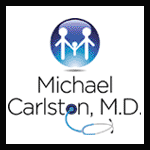We are supposed to make mistakes so that we learn. Sometimes medical authorities, especially those who issue official guidelines, are remarkably intellectually dull.
A current example is the US Preventive Services Task Force recommendation not to take vitamin D and calcium to prevent bone fractures. If they were correct, if this were based upon solid science, it would be the official acceptance of a revolutionary discovery in human physiology. It isn’t. It is instead kind of embarrassing. Expert panels are supposed to be collections of experts, individuals with particularly acute judgment about often controversial medical therapies. They are supposed to judiciously weigh all the evidence in their quest to develop useful guidelines for clinical practice. Unfortunately, panelists are almost invariably researchers with little, if any, clinical experience. There was a mini-flurry of controversy, which got far too little attention, when a study of these panels found that essentially all of the panelists had conflicts of interest because they were simultaneously receiving funding from pharmaceutical companies who would benefit from the recommendations.
In this case, it is not the financial seducements fuzzying up their brains. It is unequivocally established that calcium and vitamin D are essential, even the most essential of the essential nutrients required by our bodies to make bone. We also know that most (calcium) to nearly all (vitamin D) Americans are deficient by all surveys. The chief foundation of their recommendation, according to one of the panelists, was the Women’s Health Initiative (WHI) study. That explanation makes sense, but further disturbs me.
I have written about this aspect of the WHI study in the past. The problem was that the conclusion (no reduction in the rate of fractures from the 400 iu vitamin D and 1,000 mg calcium supplements) was unwarranted and based upon misinterpretation of their own data. First, probably all of you stumbled over that dose of vitamin D. 400 iu will raise the average person’s D level only 4 ng/ml. Most people run 10-20 ng/ml without supplementing, and we need over 50 ng/ml (maybe 70) for optimal bone formation. It is clear that concluding that vitamin D does not help, when taking only 400 iu, is like saying that water won’t help quench thirst when you are only allowed one swallow. Lacking clinical experience, they could miss that problem. The inexcusable error they made was overlooking the finding in the WHI that when they considered only the women who took the pills, the fracture rate was significantly lower. So, in other words, women in the study who did not take the supplements were not benefited, but those who did take this paltry level of vitamin D were helped.
They were aware of this issue. One of the panelists was quoted “Some also question whether the dosage was high enough to give an effect, maybe not, but there should be other studies to show otherwise.”
See why I am so critical of their pronouncement?
I do agree that taking supplements should be based upon what you are lacking. In this case, it means that supplementing your diet with enough calcium to reach recommended intake is reasonable. A healthy diet is vitally important. Turning a blind eye to your deficiencies is foolish.
